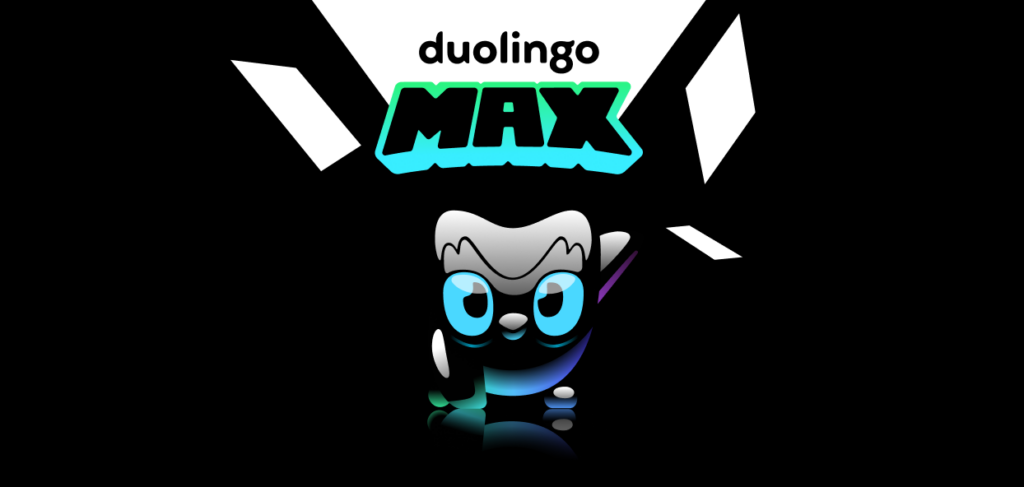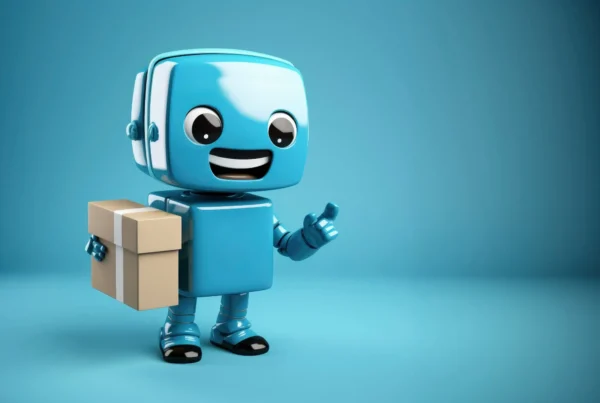In 2023 businesses are constantly seeking innovative ways to engage with their audience, drive growth and automate processes. One groundbreaking technology that has emerged in recent years and promisese to help with just that is Chat GPT. But how reliable is the platform and how much of your business tasks can you base on it? Well, I’ve been trying to find out that myself and thought might share the results, in case my clients are thinking to do the same.
Understanding Chat GPT
Chat GPT is an advanced language model that utilizes deep learning techniques to generate human-like responses in real-time conversations. Developed by OpenAI, it is trained on a vast corpus of text from the internet. The goal of Chat GPT is to understand and respond to user inputs in a natural and coherent manner.
Key Features of Chat GPT
- Contextual Understanding: Chat GPT possesses the ability to comprehend the context of a conversation, enabling it to generate relevant and contextually appropriate responses.
- Natural Language Processing: The model is designed to interpret and process natural language inputs, allowing users to communicate with it in a conversational manner.
- Coherence and Fluency: Chat GPT generates responses that are coherent, logical, and mimic human-like fluency, contributing to a more engaging and realistic conversation experience.
- Real-time Interaction: Chat GPT can provide instant responses, making it suitable for a wide range of applications where real-time communication is crucial.
How Chat GPT Works
The technical stuff
Chat GPT undergoes a pre-training phase where it learns from a vast amount of text data. It processes the input text and identifies patterns, relationships, and language structures, enabling it to develop a broad understanding of human language. After pre-training, Chat GPT is fine-tuned using more specific datasets, including demonstrations and comparisons, to align its behavior with desired outcomes. This process refines the model and improves its ability to generate appropriate responses.
When a user inputs a message, Chat GPT encodes the text, along with the conversation history, into a numerical representation. This encoding captures the context necessary for generating a relevant response. The encoded representation is then decoded by Chat GPT, which generates a response based on the learned patterns and context. The response is typically the most probable continuation of the conversation, given the input.
 In simpler terms…
In simpler terms…
To use Chat GPT, you need access to the platform by visiting this link. Next you need to create an account or obtain API keys, depending on your the specific implementation.
Once you have access, think about how you want to use Chat GPT for your business. It can be for things like helping customers, improving marketing campaigns, or creating social media content. Identifying your goals will help you make the most of Chat GPT.
Since the platform communicates through text messages, you will have to write a prompt: this could either be a question, or maybe a specific request. The more detailed the prompt, the better the results! Once you’ve written your request, click send and the platform will start generating a response. If it’s not quite what you expected, you can try changing the way you ask or give more instructions. Experimenting with different approaches can help you get better results.
Potential Benefits of Chat GPT for Businesses
In an era where businesses are constantly seeking innovative ways to streamline operations and enhance customer experiences, Chat GPT has emerged as a game-changing technology. It’s not going to replace content writers anytime soon, but it can definitely speed up some processes. Here are just a couple of benefits business can get out of the use of Chat GPT:
- Enhancing Customer Support – One of the most significant advantages of Chat GPT for businesses is its potential to completely change customer support services. Chatbots powered by GPT technology can provide 24/7 availability, ensuring that people can get assistance whenever they need it. By training the model with relevant information about a business’s products or services, a chatbot can quickly respond to FAQ, leaving human agents free to tackle more complex issues.
- Language Support – In an increasingly globalized world, businesses often interact with customers who speak different languages. Chat GPT’s ability to understand and generate text in multiple languages can be a game-changer. It eliminates language barriers, allowing businesses to expand their reach and cater to a diverse customer base without the need for a large multilingual support team.
- Streamlining Business Operations – Chat GPT can be employed for data analysis and insights. By processing vast amounts of data and generating reports, it provides businesses with valuable insights that can inform decision-making. From market trends to customer behavior patterns, Chat GPT can help businesses stay ahead of the curve.
Limitations and Challenges of Chat GPT for Businesses
While Chat GPT has shown remarkable potential in transforming how businesses interact with customers and manage tasks, it’s important to recognize that this technology comes with its own set of limitations and challenges.
- Accuracy and Reliability – While the technology has made significant strides in generating coherent and contextually relevant text, it can still produce errors and misunderstand user input, especially in complex or ambiguous situations. This can lead to incorrect information being provided to customers, potentially damaging the credibility of the business. Additionally, Chat GPT’s responses might not always align with the brand’s tone, values, or policies. Businesses must exercise caution and conduct thorough quality checks to ensure that the generated content maintains consistency and accuracy.
- Potential Bias – Chat GPT learns from vast amounts of data, which means that any biases present in the training data can be reflected in its responses. Businesses must be vigilant about this, since biased or discriminatory responses can lead to serious legal and reputation issues.
- Privacy Concerns – Chat GPT relies on data to generate responses, which means that user interactions are potentially stored and processed. Businesses must address privacy concerns by clearly communicating data usage policies and ensuring compliance with relevant data protection regulations. This is particularly important when handling sensitive information, such as personal details or financial data.
- Ethical Considerations – The adoption of Chat GPT raises ethical questions about the implications of automating human-like interactions. Businesses need to carefully consider the ethical implications of using AI-powered chatbots. For instance, customers might assume they are interacting with a human, leading to trust issues if they later discover it was a machine-generated response. Transparency in disclosing the use of AI is crucial to maintain trust with customers.
- Cost of Implementation – Integrating Chat GPT into business operations involves financial considerations. Developing, fine-tuning, and maintaining a chatbot powered by GPT requires investment in terms of technology, expertise, and resources. Businesses must evaluate whether the potential benefits outweigh the costs in their specific context.
Real-world use cases for Chat GPT
Chat GPT can be leveraged by various industries, since it only takes a trend-oriented manager or marketing department to start automating processes and free time for more important tasks. Here are some examples:
- E-commerce: Online retailers can utilize Chat GPT to provide product recommendations, answer questions, assist in the shopping process, and enhance the overall customer experience.
- Hospitality and Travel: Hotels, travel agencies, and booking platforms can use it to provide information on accommodation options, travel itineraries and answer travel-related queries about the city or country.
- Education: E-learning platforms and online tutoring services already use Chat GPT to provide interactive learning experiences, answer student queries and offer virtual tutoring or homework assistance.
- Real Estate: Real estate agencies can use it to engage with potential buyers or renters via chat or even provide virtual tours.
It’s important to note that these industries represent just a fraction of the potential applications for Chat GPT. The flexibility and versatility of the technology make it adaptable to various sectors, enabling businesses to enhance customer engagement, improve overall efficiency.
Can your business rely on Chat GPT?
Let’s say that all of the above have sparked your interest and now you are sure you want to try Chat GPT for yourself. However, before integrating this technology into your business processes, it’s crucial to assess whether it aligns with your specific needs, goals and budget.
Identifying business needs
The first step in assessing Chat GPT for your business is to identify your specific needs: What are the pain points or challenges you aim to address with this technology? For instance, are you looking to improve customer support, automate tasks, or enhance user engagement?
Clearly defining your objectives will help you determine if Chat GPT is the right solution.
Integration considerations
Integrating Chat GPT into your business processes requires careful planning. Consider where and how you intend to deploy the technology. Will it be used on your website, in a mobile app, or through messaging platforms?
Chat GPT also comes in various versions and models, each with its own capabilities and limitations. You must choose the right model that aligns with your business needs. Some models are better suited for natural language understanding, while others excel at generating human-like responses. Evaluate the available options to select the one that best fits your use case.
Don’t forget about the financial considerations. You need to assess whether the potential return on investment (ROI) justifies the costs associated with integration, training, and maintenance. Consider factors like increased efficiency, reduced operational costs, and improved customer satisfaction when conducting your cost-benefit analysis.
Data availability and compliance
Chat GPT relies on data for training and generating responses. Assess the availability and quality of the data you can feed into the model. High-quality, relevant data is essential for the chatbot to provide accurate and valuable information to users. If your data is lacking or incomplete, it may impact the effectiveness of Chat GPT.
And since some types of informations can be considered sensitive, compliance with data protection and privacy regulations is crucial. Ensure that the use of Chat GPT aligns with relevant legal frameworks, such as GDPR or HIPAA, depending on your industry and geographical location. Addressing privacy and security concerns is essential to protect both your customers and your business.
User experience
The success of Chat GPT implementation in your business depends on the user experience it delivers. When investing in user experience (UX), consider factors such as conversation flow, user interface design, and user feedback mechanisms to optimize the user experience.
Chat GPT requires ongoing training and fine-tuning to improve its performance over time. Allocate resources and a strategy for continuous improvement, as the initial implementation is just the beginning. Regularly monitor user interactions, gather feedback, and make necessary adjustments to enhance the chatbot’s capabilities.
Example of businesses that already use Chat GPT
Since the use of Chat GPT is still growing, it’s hard to find full case studies to give as examples. But here are some companies that already have implemented a form of Chat GPT in their business model and how they are doing so far:
- Duolingo – I admit: I’m a big fan! Just reached 1 full year of daily Spanish lessons 🙂 But I haven’t tested their new feature: Duolingo Max. It takes advantage of GPT-4 in order to provide users with new types of lessons, Explain My Answer and Roleplay.
- eBay ShopBot – Another one of my favorite apps, eBay developed a new chatbot integration for Facebook Messenger, named ShopBot. It’s a great tool for users who want to search for products fast, easy and … with a bit of help. They say it can help you find the best deals just by chatting and even sending pictures of what you want.
Yes, I admit the examples above are big businesses with a lot of resources at their disposal, but I see this as an opportunity to watch early adopters and gather information about the real usage and success of tools like Chat GPT.
 The future of businesses in the Chat GPT era
The future of businesses in the Chat GPT era
The future of using Chat GPT by businesses is marked by three transformative trends:
- Firstly, there will be a profound shift toward hyper-personalization. As AI models become more sophisticated, chatbots powered by GPT technology will deliver highly individualized experiences. These chatbots will understand customers on a deeper level, offering personalized product recommendations, tailored communication styles, and services customized to each customer’s preferences, enhancing customer loyalty and satisfaction.
- Secondly, Chat GPT is set to become multimodal, handling not only text but also images and voice seamlessly. This means users can communicate with businesses using various formats, making interactions more natural and intuitive. For instance, users can share images of products they’re interested in, and chatbots will provide detailed information and purchasing options. This multimodal capability will enable richer and more dynamic interactions.
- Lastly, Chat GPT will increasingly collaborate with human agents, forming powerful human-AI teams. Chatbots will handle routine inquiries, gather information, and assist with basic problem-solving, while human agents will step in for complex or empathetic interactions. This collaborative approach will enhance efficiency, ensuring timely support and guidance to customers, ultimately improving overall customer service and satisfaction.
Conclusions….
The potential of Chat GPT in reshaping how businesses operate and interact with customers is undeniable. However, while the promise is substantial, a measured approach is necessary to harness this technology effectively. Businesses should carefully assess their specific needs and goals before integrating Chat GPT into their operations. Understanding the limitations and challenges is equally vital.
If you have a company that might benefit from integrating Chat GPT into the business flow, let me know how are you planning to proceed and what are the biggest issues for you right now. I would be happy to discuss more.









One Comment